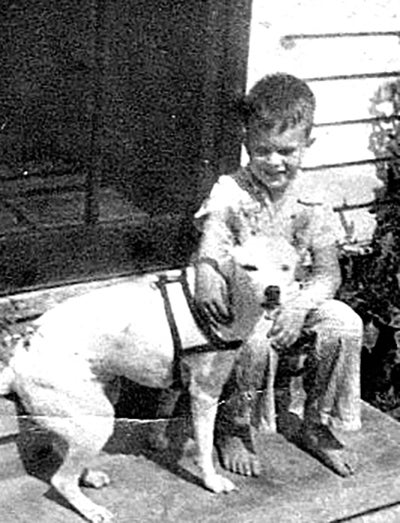And Now You Know: Dr. Robert Neblett, the man who gave the bluff its name
Published 8:52 am Saturday, January 8, 2022

- And Now You Know
|
Getting your Trinity Audio player ready...
|
On a recent road trip to do some photography at the Grimes County courthouse in Anderson, Texas I found a large grey Texas Historical marker on the east side of the courthouse. It is one of the large markers that was placed around the state in 1936 for the Texas Centennial Celebration. The marker has a list of veterans from various wars who were citizens of Grimes County.
The second name on the list is “Dr. Robert C. Neblett, War of 1812”. I wondered if this man had a connection to Niblett’s Bluff, an area across the Sabine River from Orange.
In the early 1800s, a traveler entering Texas would likely have made the river crossing at the bluff that was the last high ground on the east bank of the river. From the bluff downriver is nothing except swamp and marshland to the mouth of the river at Sabine Lake.
When the crossing was first given a name, it was called Millspaw’s Bluff, a later name was Jericho, and later still it was named Neblett’s Bluff. Sometime for some reason the spelling became Niblett’s Bluff, the name the area is known by presently.
Niblett’s Bluff became important to Orange as both areas became part of the Old Spanish Trail. Niblett’s Bluff became a settled area with two stores, a hotel, and in the late 19th and early 20th Centuries there was a school there.
Logs that were cut in the forests of Southwest Louisiana were brought to the Bluff by tramline and dumped in the river, tied into rafts and towed to the mills at Orange. When cotton was grown in the area, it passed through the Bluff to be loaded on steamboats and shipped to Sabine Pass for transport.
During the Civil War, a Confederate fort, Camp Pleasant, was established on the river bluff. Though there was never any fighting there, the fort was important for the defense of Texas. If the Union forces had gotten past Sabine Pass, the next Confederate forces placed to defend Texas were those at Niblett’s Bluff.
Robert Caldwell Neblett was born in Roanoke, Virginia in 1795. He fought in the War of 1812 and after his service taught school for two years. He then entered the University of Pennsylvania where he received a medical diploma. He practiced medicine in Tennessee and Mississippi. In 1830, he moved to Louisiana and about 1833 he settled on the east bank of the Sabine River at the crossing that would later take his name. He established a successful plantation. Immigrants going into Texas could receive medical attention and supplies at his plantation. The plantation became know as a place friendly to travelers and willing to help those in need.
Neblett bought Texas Land Certificates from veterans of the Texas Revolution who wanted money instead of land. He moved to Texas in 1840 and settled in Houston for a time before moving and establishing a plantation two miles northeast of Navasota in what is now southeast Grimes County.
In 1843, he helped organize the Masonic Collegiate Institute in Anderson. In 1855-56, he represented Grimes County in the House of the Sixth Texas Legislature.
He died in 1871 and is buried in Anderson.
“And now you know.”






